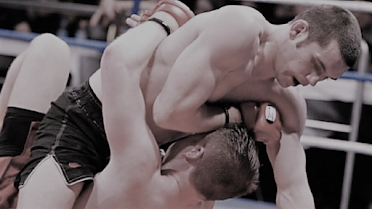The keys to success for Fedor are his high-level Judo background combined with excellent Boxing & striking skills. His style could be described as ‘Judo-Boxing’ when on his feet combined with devastating Ground and Pound once the fight goes to the floor.
Judo combines very well with boxing in terms of mixing fighting styles for MMA.
Judo & Boxing stance is very similar - Upright stance with hands up to grip fight in Judo to protect from punches in boxing.
Judo has a heavy emphasis on Grip fighting / Hand fighting which can be adapted for striking as a means of removing the opponent's guard.
The Kuzushi/off-balancing of Judo can be used to set up strikes in the clinch position
The strengths of one style cover the potential weakness of the other:
One of the problems with Judo can be in closing the distance in order to use the techniques - Boxing your way into clinch range which Fedor does very successfully is an example of how the two styles can work together.
Another problem is that the techniques which result in a win via Ippon in Judo such as a high amplitude may not be worth the risk in an MMA fight. For example, the Hip Throw or Shoulder Throw may result in throwing the opponent but not actually injuring them or landing in an advantageous position. However, the Kuzushi or off-balancing that goes into setting up these techniques could also be used to push and pull the opponent onto strikes. This is something that Fedor has used extensively in many of his fights.
I have broken this session down into combinations based on techniques which Fedor has used in his fights. Although some of these combinations are not taught exactly the way that he used them, I feel that practising them in this format is an efficient way to learn while also getting an understanding of the concepts and principles which make the techniques work.
Technique A - Used versus Kazuyuki Fujita
Combination: Right Hook - Left Body Kick - Right Cross - Left Hook
Key Ideas: Fedor employs fast accurate striking. Focuses on using punches most notably the ‘Russian Hook’ but also mixes it up with kicks which he has refined through extensive Dutch Kickboxing training with Ernesto Hoost.
The Russian Hook involves finishing the punch with the thumb down and shoulder high and is perfect for entering into clinch via collar tie or under-hook grip.
Technique B - Used versus Cro-Cop
Combination: Right Cross to Body - Left Uppercut - Left Hook
Key Ideas: Cro Cop is obviously aware and cautious of Fedors heavy right hook and is ready to defend punches to the head. Fedor is very good at mixing up the targets of his strikes rather than just ‘head-hunting’. Fedor lands the straight right to the open target of the body then follows up with the left uppercut to raise up his opponent's chin then follows up with the left hook.
Technique C - Used versus Zuluzinho
Combination: Right Hand Trap to Opponents Lead Hand then Lunging Left Hook
Key Ideas: Clear obstructions i.e. your opponents' guard so that you can land your punches. Grip fighting (Kumi Kata) techniques are a huge part of successful judo. If you can't grip your opponent then you cannot set up a throw. Elements of the same grip fighting strategies can also be used in clearing your opponent's guard.
Technique D - Used versus Tim Sylvia
Combination: Right Hand Trap to Opponents Lead Hand then Lunging Left Hook - Then Right hook which leads into Right Collar Tie - Left Uppercut (from Clinch) - Left Hook - Then Right hook - Left hook - Right hook.
Key Ideas: Kuzushi / Off balancing from the collar tie grip as if to set up the headlock throw (Koshi Guruma) but instead use it to off-balance the opponent so he is open for punches.
Technique E - Used versus Gary Goodridge
Combination: Following on from the previous Combination - Opponent covers up - Post on his head with your right hand - Left Uppercut to the body - Left Uppercut to head - then Right under-hook - Left Knee to Body then Knee Tap Takedown.
Key Ideas: Keeping the opponent guessing by mixing up striking with takedown setups.
Technique F - Used versus Cro Cop
Combination: Right Hook into Right under-hook - To Inside Trip (Ouchi Gari) Takedown.
Key Ideas: Using strikes to close the distance to clinch. Focus on leg takedowns such as Trips as opposed to Double Leg or Single Leg takedowns which may tire out and weaken the arms taking away your punching power and ability to defend strikes.
Technique G - Used versus Nogueira
Combination: Bicep Control then Posture up to Punch - Wrist Trap with Knee - Using the Guard Pass to Land Punches









